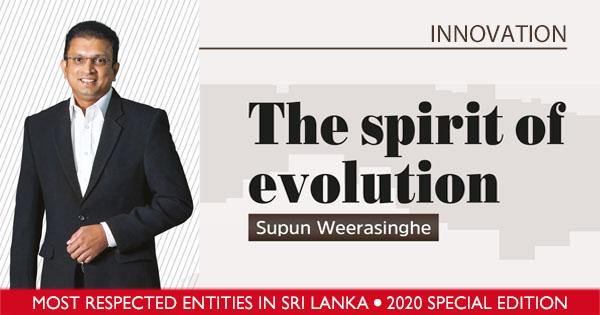“In the aftermath of the COVID-19 outbreak, corporate dynamism will witness increasing relevance and become the foundation for effective business decisions,” says Stasshani Jayawardena who is among the emerging generation of young corporate leaders.
She adds: “Encompassing the ability to identify both opportunity and threats, dynamism is an intrinsic ability that will enable businesses of the future to both survive and thrive in the post-COVID environment.”
Noting the stark sense of urgency and high stakes brought about by the COVID-19 outbreak, Jayawardena urges businesses to sustain a
competitive edge by prioritising corporate dynamism to cope in what will become a hyper-competitive environment.
“We must be both defensive and offensive in our approach to tackling the various challenges in the emerging new working order, which will
witness advancements in technology. Given the series of unprecedented events unfolding, we must realign, reinvent and be prepared to relaunch businesses,” she says, pointing to the virtual tea auction as an example.
Jayawardena’s experience as a director of several boards has left her well acquainted with the demands of leadership and identification of talent that’s conducive to a dynamic business. She acknowledges that at its core, dynamism doesn’t involve mere responses alone but also relies heavily on staff and their ability to facilitate effective decisions.
Corporate dynamism is essential for business continuity, she reiterates – adding that dynamism will define the way markets do and measure business, and manage staff.
“Staff that champion stability, sustainability and adaptability – with skills suited to fostering future growth, business relationships and innovation – are invaluable to businesses that seek to develop corporate dynamism,” she asserts.
And she adds: “Dynamism may lead to corporate admiration but that too is dependent on how much value a dynamic staff cadre can generate.”
In support of her statement, Jayawardena suggests that the country as a whole could take several steps to promote dynamic workforces, beginning at the onset of education: “From a young age, children should be exposed to problem solving capacities, overcoming mistakes, accepting failure and
critical thinking.”
“The ability to understand complexity and ambiguity – with greater personal and social growth, through enhanced self-efficacy, moral reasoning,
interpersonal skills, intercultural competencies and commitments to social service – would eventually prove beneficial to dynamism at the national level as well,” she adds.
Commenting on the present level of corporate dynamism in Sri Lanka, Jayawardena believes there’s room for improvement: “Complacency is a large part of the problem. Companies tend to become sidetracked and therefore, fall short of acting on a clear strategy that could result in innovation and reinvention.”
She maintains that “very few companies in Sri Lanka are earnestly committed to analysing trends in the business environment, and even fewer have the capacity to make the most of these trends and act decisively to match shifting market dynamics.”
Jayawardena points to the economic repercussions of policy inconsistency as one of the reasons for Sri Lanka’s stifled dynamism.
To this end, she remarks that “companies are unable to make informed decisions or prepare themselves for the long run owing to erratic changes in policy… Policy consistency should be prioritised with research to support and gauge policy efficacy in relation to society, the environment, markets and people.”
Looking ahead, Jayawardena suggests that “corporate dynamism should encompass contributions to stakeholders and environmental sustainability.”
“I’ve found that throughout my career, a sound strategy must include the pursuit of solutions that protect the environment, and include the concerns and wellbeing of key stakeholders across the chain. This could also be in response to socioeconomic and developmental needs in communities in which businesses operate,” she explains.
Her conclusion is that “if purpose drives the heart of your business, success, achievement and above all sustainable business dynamism will follow.”





